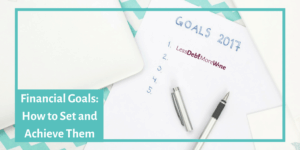How to Use Spending Days to Save Money
THIS POST MAY CONTAIN AFFILIATE LINKS. MEANING I RECEIVE COMMISSIONS FOR PURCHASES MADE THROUGH THOSE LINKS, AT NO COST TO YOU. PLEASE READ MY DISCLOSURE FOR MORE INFO.
If you’ve been cruising around Personal Finance blogs, then you’ve likely heard of a no-spend challenge.
The premise of a no-spend challenge is that you have a list of things you are allowed to buy (the essentials like food for example), but otherwise you don’t spend money.
Typically it lasts for a month, and then there are those bloggers that do it for years.
Good, for them, but it’s never really worked for me. What I have found that works are what I call my spending days.
A Spending Day vs a Non-Spending Day
The point of a spending day is to do all your spending for the week on one day. Or maybe 1-2 days. Really the point is to have more non-spending days than spending days.
In case it wasn’t clear, a non-spending day is a day you don’t spend any money – that includes paying bills – those are for spending days.
So if you are really struggling with constantly spending money, start with every other day, and then have two days in a row that you don’t spend money.
So for example, the other day I was cleaning out my car – we’re talking a deep clean. I used to have a cover that kept the dog hair off my back seat that broke, which meant a ton of dog hair had accumulated since. Not really enjoying vacuuming up all that dog hair – I decided to order a new cover. Later, I realized that I had also never replaced my sunglasses clip – so I placed a second online order. My goal was to make sure I got everything I needed, ordered that day. But I didn’t pressure myself to do it all in one order.

I think that is where I’ve always struggled with No-Spend challenges – I never think of everything that should be on my “allowed to buy” list.
So if you’ve tried a no-spend challenge and failed – I feel ya.
The point of a no-spend challenge is to not only to cut back on frivolous spending but really to help you be more mindful of your money and how you manage it.
Having designated spending days can accomplish the same thing.
How Spending Days Help You Be More Mindful of Your Money
Once you’ve decided that a day is a spend day, it forces you to think of everything you need throughout the day so you can make sure you get all your shopping done. It helps you stay more on top of your needs.
Note, I say needs, rather than wants. To save you from constantly spending on things you don’t need, keep a wishlist. For example, if you shop on Amazon a lot you can simply create a wishlist.
Then set a rule for yourself, say you one day decide you want a new movie. If it stays on your wishlist for 4 spending days and comes spending day 5 you still really want to spend the money on it – then get it.
It’s not really depriving yourself it’s just delaying the decision to another day which not only helps cut back on decision fatigue but also makes sure it’s something you really, really want and feel comfortable spending the money on.

What to Do if You Fail Your First Attempt at Spending Days
First, give yourself grace, you’re trying something new.
Now, let’s make sure your second attempt goes better, look at your financial calendar – what bills do you have coming due soon, when do you typically do your grocery shopping, etc. Plan for these to be spending days. See if you can combine them. Say pay all your bills on the same day rather than each day they are due.
Then when those days come, be sure to take stock if there is anything else you’re going to need between now and the next spending day. Get it, and get ready to put your wallet away for a day.
Wrapping it Up
Don’t feel bad if you’ve read a ton of articles on people saving some insane amount of money from doing a no-spend challenge. Everyone is different and it could be that a no-spend challenge doesn’t work to help you be more mindful of your spending. But having designated spending and no spending days can help you be more mindful. Here is how to get started
- Check your financial calendar to determine upcoming spending days
- Try to have more no-spend days than spending days per week
- A no-spend day is a day that no money leaves your bank account or gets charged to a credit card.
- On a Spending Day, make sure to take stock of everything you might need between now and the next spend day, so you can get it taken care of.
That’s it, have you ever tried a no-spend challenge, what about spending days? Let me know what you think in the comments!


